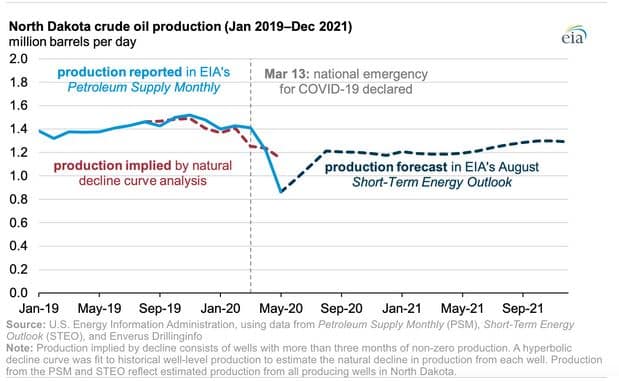North Dakota Crude Oil Output Fell Beyond Natural Declines Driven by Low Prices: EIA

North Dakota’s crude oil output fell by 41.6 percent between December 2019 and May 2020, a much larger decline than it would have been if producers ceased new drilling and allowed production from existing wells to drop naturally, according to an Aug. 20 report from the U.S. Energy Information Administration. The decline is largely attributed to low crude oil prices.
Based on Enverus’s data, which covers most operating wells in North Dakota, the agency noted that production would have been about 1.1 million barrels per day in May 2020, or about 0.4 million barrels per day above what those wells actually reported. This difference indicates that many producers chose to cut production from existing wells beyond the volume that would have naturally declined. Crude oil output fell from an average of 1.5 million to 0.9 million barrels per day from December 2019 to May 2020.
Production is not expected to decline further, with the agency’s recent short-term outlook predicting that output will rise to an average of about 1.2 million barrels per day from August 2020 to July 2021, driven by a combination of higher prices and increased refinery demand.
EnerKnol Pulses like this one are powered by the EnerKnol Platform—the first comprehensive database for real-time energy policy tracking. Sign up for a free trial below for access to key regulatory data and deep industry insights across the energy spectrum.
ACCESS FREE TRIAL